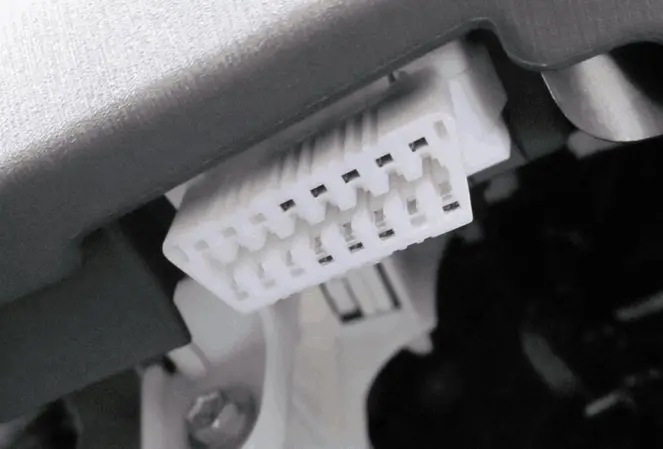OBD1 vs. OBD2: The Evolution of Vehicle Diagnostics
Step into the world of On-board diagnostics (OBD) as we explore the transformative journey of OBD1 and OBD2 and the differences OBD2 vs OBD1. These two generations of onboard diagnostic systems have left a remarkable impact on automotive maintenance and emissions control. While OBD1 comes with manufacturer-specific interfaces, OBD2 brings standardized diagnostics with universal connectors.
Join us in this exploration to uncover the fundamental differences between OBD2 vs OBD1 and how they’ve revolutionized modern automotive servicing and regulations. Whether you’re a technician or a curious car owner, discover the intriguing evolution of OBD1 and OBD2, and their lasting influence in the automotive industry.
What is OBD1?
OBD1 is the first generation of vehicle diagnostic systems. Emerging in the early 1980s, OBD1 was a vital innovation to address the growing complexity of automotive technology and the need for efficient diagnostics. The standardization by CARB mandated that all vehicles produced from 1991 onwards in California should adhere to the OBD1 requirements. It was a prevalent diagnostic system used in vehicles until 1995, before the launch of OBD2.
The main purpose of OBD1 was to monitor the emissions system. It achieved this by collecting data from sensors placed throughout the vehicle, allowing it to detect potential issues or malfunctions.
OBD1 lacked a standardized connector, resulting in various proprietary diagnostic interfaces across car manufacturers. Consequently, mechanics faced challenges in diagnosing problems, requiring specialized tools and knowledge for each vehicle make. Thus, one OBD1 scanner cannot be used for vehicles from two different brands.
OBD1 provided limited information and basic fault codes, necessitating skilled interpretation by technicians. Despite its early significance, OBD1 eventually made way for OBD2, a more advanced and standardized version.
You can explore our lists of OBD1 codes now, including codes from brands like HONDA, Ford, and more.
What is OBD2?
OBD2 is the second generation of onboard diagnostic systems for vehicles. It represents a significant advancement over its predecessor, OBD1.
OBD2 was introduced to further improve emissions monitoring and diagnostics, addressing the need for a more comprehensive and standardized approach to automotive diagnostics. The primary goals of OBD2 were to enhance emission controls, simplify diagnostics, and provide a universal system that could be used across different vehicle manufacturers.
From 1996, all vehicles marketed in the US must be equipped with the OBD2 system. A 16-pin OBD2 port can be found under the dash of every car. They all use OBD2 communication protocol with a universal connector SAE 1962.

This system can enable the OBD2 scanner to interchange info with the ECUs of every OBD2-compliant car to improve emissions monitoring and diagnostics, addressing the need for a more comprehensive and standardized approach to automotive diagnostics. The primary goals of OBD2 were to enhance emission controls, simplify diagnostics, and provide a universal system that could be used across different vehicle manufacturers.
If you are in demand of searching OBD2 code, visit our accurate OBD2 codes lookup!
OBD1 vs. OBD2 Comparison
OBD1 and OBD2 are two generations of onboard diagnostic systems that have significantly impacted the automotive industry. While both serve the purpose of monitoring and diagnosing vehicle systems, there are notable differences between the two that have improved the effectiveness of automotive diagnostics.
Time of Implementation
OBD1 was introduced in the early 1980s and was standardized by CARB in 1991. At the same time, OBD2 was mandated for all vehicles produced from the 1996 model year onwards in the United States.

Standardization
OBD1 lacked a standardized diagnostic system and connector, resulting in various proprietary interfaces among different vehicle manufacturers. This lack of uniformity made diagnosing issues across multiple makes and models challenging. One of the most significant improvements in OBD2 was the diagnostic system introduced by CARB in 1991. OBD2 mandated a common 16-pin diagnostic connector and a set of universal diagnostic trouble codes (DTCs). This standardization made diagnostics more accessible, as generic code readers and scan tools could be used across different vehicle brands.
Diagnostic Capabilities
While OBD1 was a pioneering step in automotive diagnostics, its capabilities were limited compared to OBD2. OBD1 provided basic fault codes and limited data, requiring experienced technicians to interpret the information accurately.
With the advancements brought by OBD2, diagnostics have become more comprehensive and informative. OBD2 expanded the range of monitored systems and parameters, allowing real-time data streaming and providing more detailed information about the vehicle’s performance. This enabled technicians to pinpoint issues more accurately and efficiently.
Emissions Control
OBD1 played a role in emissions monitoring, but its capacity was relatively modest compared to the strict emission regulations introduced later. In response to stringent emission standards, OBD2 was designed with enhanced emissions control capabilities. OBD2 continuously monitors emissions-related components and systems, ensuring compliance with environmental regulations and contributing to reduced vehicle pollution.
Frequently Asked Questions
- Can I use an OBD2 scanner on an OBD1 port?
No, you cannot use an OBD2 scanner on an OBD1 port directly. OBD1 and OBD2 use different communication protocols and connectors, making them incompatible with each other. Always ensure that you have the correct scanner for your vehicle’s specific OBD system.
- Is my car OBD1 or OBD2?
There are some ways to detect your car diagnostic system:
- Check the vehicle’s model year: If your car was manufactured in 1995 or earlier, it is likely OBD1. If it was manufactured in 1996 or later, it is most likely OBD2.
- Look for the diagnostic connector: OBD1 vehicles have manufacturer-specific connectors, while OBD2 vehicles have a standardized 16-pin connector. You can check under the dashboard near the driver’s side for the diagnostic port.
- Consult the vehicle’s manual: You can also refer to the owner’s manual or contact the manufacturer to determine the OBD system your car uses.
Final Thoughts
In conclusion, OBD1 and OBD2 represent significant milestones in automotive diagnostics, with OBD2 building upon the foundation laid by OBD1. OBD2’s standardization, comprehensive monitoring, and improved emissions control have made vehicle diagnostics more efficient, effective, and accessible. This standardization and sophistication have helped modern vehicles adhere to emission standards, reduce pollution, and ensure better overall performance.
Share this insightful comparison of OBD1 and OBD2 with your fellow automotive enthusiasts and technicians. If you have any thoughts or questions about this article, feel free to leave a comment below; we’d love to hear from you!

Leave a Reply